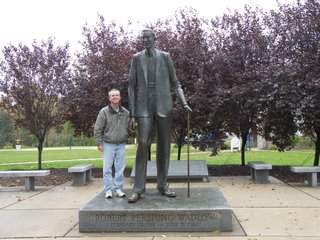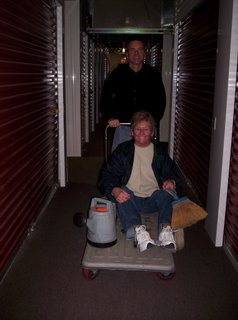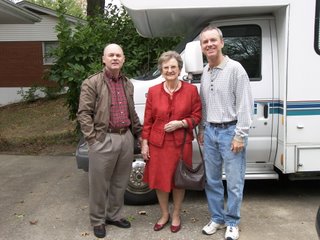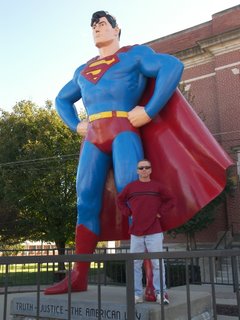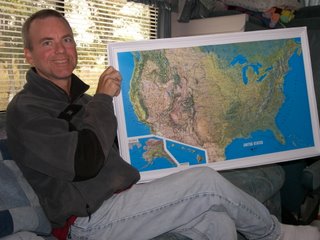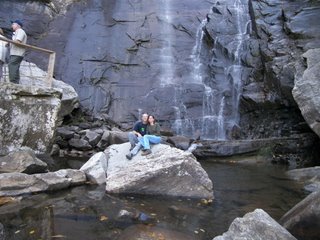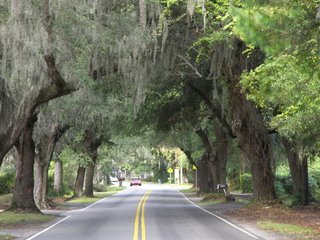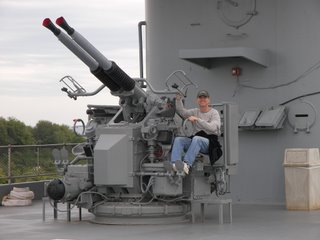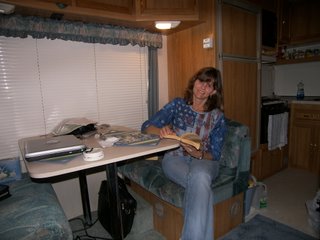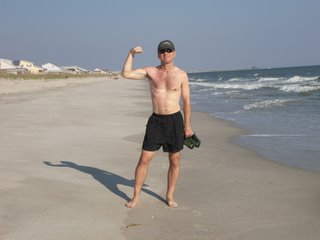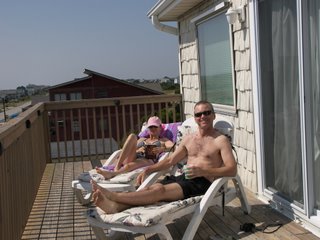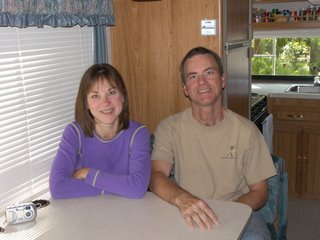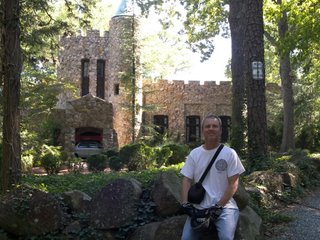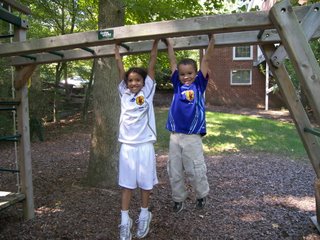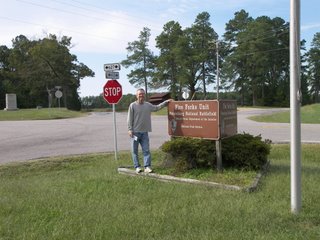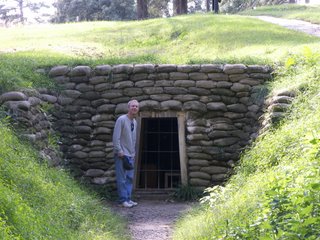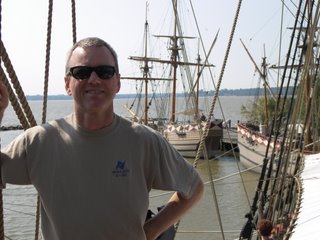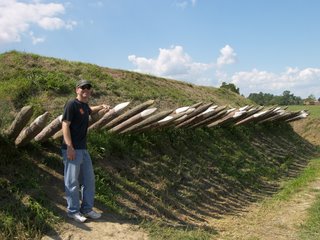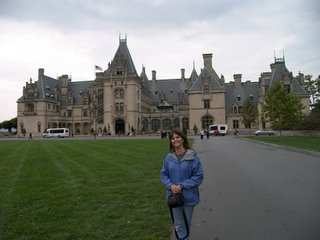
October 11, 2006
Yesterday evening before going to bed we heard a loud boom on the roof of our RV. After investigating we found we were parked under a Black Walnut tree attacking us with it’s baseball size nuts. Earlier in the evening while BBQ’ing I had cracked one open with a hammer but found the nutmeat too much work to collect. Wanting to have a good nights sleep, Aimee and I inched the RV as close to the road as our power cord would allow us. It was enough to get us mostly out from under the tree.
In the morning we head towards Asheville and stop at the Biltmore Estate. Biltmore was the home of George Washington Vanderbilt. George’s father and grandfather had made a vast fortune in the shipping and railroad business (more than Bill Gates). George took his part of the inheritance and built the ultimate estate. He bought 125,000 acres in this area and opened the country’s largest private house in 1895. It has 250 rooms, 35 bedrooms and 65 fireplaces. It was also state of the art for its time with electric lighting, an elevator, mechanical refrigeration, bowling alley and heated indoor swimming pool.
The entrance fee is stiff. We pay the slightly lower non-summer price of $42 each. That gets you in the door to look around and gives you the right to purchase audio tours, guided tours, and specialty tours for an added cost. Despite the high price the place is packed. Don’t these people know it is the off-season!
We splurge and get the audio tour. The house is nothing if not impressive. The scale is awesome, and the decoration rich but not gaudy. The driveway up to the house is 3 miles long. The setting of the house in the middle of a mountain forest (that he planted) is gorgeous. With the audio tour it takes us several hours to go thru the house. You can tour mine in 60 seconds. It is amazing how much money the ‘robber barons’ had in those days. There is also an extensive garden outside the house. After the house tour we fall in line for the shuttle back to the parking lot. As we wait for the bus, I am thinking that coming here was an expensive mistake. Aimee got way too many ideas for her dream house she wants in Tucson.
The estate grounds also contained a working farm partly to earn money and partly to feed the household, the many servants, the many guests who visited, and the guest’s servants. From the house, we drive five miles to the winery on another section of the estate. In the 1970’s they started a winery on the grounds of the original dairy. It is billed as the most visited winery in the country. We do the self-guided tour in record time and head to the tasting. The wine is actually pretty good. Near the winery we also see some more of the original farm buildings.
My feet are tired so we head out of the estate and stay at another campground on the west side of Asheville.

